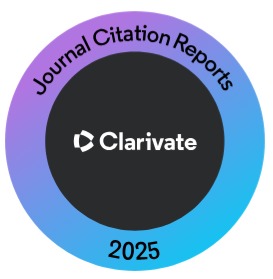Assessing Dietary Practices of Children with Avoidant Restrictive Food Intake Disorder (ARFID) - A Cross-Sectional Study
Keywords:
ARFID, Eating Disorders, Food aversions, Food Frequency Questionnaire, Loss of appetite, UnderweightAbstract
OBJECTIVE: The current study aimed to find children's dietary patterns with Avoidant Restrictive Food Intake Disorder (ARFID) and its characteristics in children.
METHODOLOGY: This mixed-method cross-sectional study conducted in April 2021 among children with Avoidant Restrictive Food Intake Disorder. Thirty participants of the age group (5-12 years) were selected from the Pediatrics and Children Ward of Ittefaq Hospital, Lahore, with a purposive sampling technique. Outpatient children aged between 5 and 12 years were included, whereas the children who had any congenital disabilities and were diagnosed with any other eating disorder were excluded. A focus group discussion was held for the formulation of the questionnaire. A diagnostic criteria questionnaire for ARFID was taken from the Canadian Pediatric Surveillance Program 2017, including anthropometric data and general characteristics/behavioral features. A self-structured food frequency questionnaire was used. Informed consent was taken from all participants. Qualitative interviews were reported as thematic analysis, and Quantitative data were analyzed using SPSS version 25 as statistical analysis for data visualization, simple statistics to generate summary charts, and customized graphs.
RESULTS: Patients with ARFID were primarily female and relatively young, with a mean age of 8.35±0.46. Most of the participants were underweight (77%). The mean BMI (kg/m2) of children was 13.7±0.26. Most patients with ARFID also reported a lack of interest in eating, loss of appetite, aversion due to sensory characteristics and avoidance of certain foods.
CONCLUSION: ARFID is prevalent in all populations, but the lack of awareness among healthcare professionals and the general population makes the diagnosis difficult.
References
Thomas JJ, Lawson EA, Micali N, Misra M, Deckersbach T, Eddy KT. Avoidant/restrictive food intake disorder: a three-dimensional model of neurobiology with implications for etiology and treatment. Curr Psychiatry Rep. 2017; 19(8): 54. doi: 10.1007/s11920-017-0795-5.
Association AP. Diagnostic and Statistical Manual of Mental Disorders 5th Edition. doi: 10.1176/appi. books.9780890425596.
Pitt PD, Middleman AB. A focus on behavior management of avoidant/restrictive food intake disorder (ARFID): A case series. Clin Pediatr (Phila). 2018; 57(4): 478-80. doi: 10.1177/000992 2817721158. Epub 2017 Jul 18.
Lieberman M, Houser ME, Voyer AP, Grady S, Katzman DK. Children with avoidant/restrictive food intake disorder and anorexia nervosa in a tertiary care pediatric eating disorder program: A comparative study. Int J Eat Disord. 2019; 52(3): 239-45. doi: 10.1002/eat.23027. Epub 2019 Feb 1.
Norris ML, Robinson A, Obeid N, Harrison M, Spettigue W, Henderson K. Exploring avoidant/restrictive food intake disorder in eating disordered patients: A descriptive study. Int J Eat Disord. 2014; 47(5): 495-9. doi: 10.1002/eat.222 17. Epub 2013 Dec 16.
Zimmerman J, Fisher M. Avoidant/restrictive food intake disorder (ARFID). Curr Probl Pediatr Adolesc Health Care. 2017; 47(4): 95-103.
doi: 10.1016/j.cppeds.2017.02.005.
Pennell A, Couturier J, Grant C, Johnson N. Severe avoidant/restrictive food intake disorder and coexisting stimulant treated attention deficit hyperactivity disorder. Int J Eat Disord. 2016; 49(11): 1036-9. doi: 10.1002/eat.22602. Epub 2016 Aug 13.
Coglan L, Otasowie J. Avoidant/restrictive food intake disorder: what do we know so far?. BJPsych Adv. 2019; 25(2): 90-8. doi: 10.1192/bja. 2018.48.
Thomas JJ, Eddy KT (editors). Cognitive-behavioral therapy for avoidant/restrictive food intake disorder. Children, Adolescents, and Adults. Cambridge University Press; 2018. doi: 10.1017/9781108233170.
Tsai K, Singh D, Pinkhasov A. Pudendal nerve entrapment leading to avoidant/restrictive food intake disorder (ARFID): A case report. Int J Eat Disord. 2017; 50(1): 84-7. doi: 10.1002/eat.22601. Epub 2016 Aug 19.
Maragakis A, O'Donohue WT (editors). Principle-based stepped care and brief psychotherapy for integrated care settings. Springer. 2018.
Duncombe Lowe K, Barnes TL, Martell C, Keery H, Eckhardt S, Peterson CB, Lesser J, Le Grange D. Youth with avoidant/restrictive food intake disorder: examining differences by age, weight status, and symptom duration. Nutrients. 2019; 11(8): 1955. doi: 10.3390/nu11081955.
Keery H, LeMay-Russell S, Barnes TL, Eckhardt S, Peterson CB, Lesser J et al. Attributes of children and adolescents with avoidant/restrictive food intake disorder. J Eat Disord. 2019; 7: 31. doi: 10.1186/s40337-019-0261-3.
Fisher MM, Rosen DS, Ornstein RM, Mammel KA, Katzman DK, Rome ES et al. Characteristics of avoidant/restrictive food intake disorder in children and adolescents: a "new disorder" in DSM-5. J Adolesc Health. 2014; 55(1): 49-52. doi: 10.1016/j.jadohealth.2013.11.013. Epub 2014 Feb 5.
Patrawala MM, Vickery BP, Proctor KB, ScahillL, Stubbs KH, Sharp WW. Avoidant-Restrictive Food Intake Disorder (ARFID): a Treatable Comorbidity Associated with Food Allergy? J Allergy Clin Immunol. 2022; 10(1): 326-8.e2. doi: 10.1016/j. jaip.2021.07.052. Epub 2021 Aug 12.
Kurz S, Van Dyck Z, Dremmel D, Munsch S, Hilbert A. Early-onset restrictive eating disturbances in primary school boys and girls. Eur Child Adolesc Psychiatry. 2015; 24(7): 779-85. doi: 10.1007/s00787-014-0622-z. Epub 2014 Oct 9.
Goldberg HR, Katzman DK, Allen L, Martin S, Sheehan C, Kaiserman J et al. The prevalence of children and adolescents at risk for avoidant restrictive food intake disorder in a pediatric and adolescent gynecology clinic. J Pediatr Adolesc Gynecol. 2020; 33(5): 466-9. doi: 10.1016/j.jpag. 2020.06.004. Epub 2020 Jun 15.
Harshman SG, Wons O, Rogers MS, Izquierdo AM, Holmes TM, Pulumo RL et al. A diet high in processed foods, total carbohydrates and added sugars, and low in vegetables and protein is characteristic of youth with avoidant/restrictive food intake disorder. Nutrients. 2019; 11(9): 2013. doi: 10.3390/nu11092013.
Davis E, Stone EL. Avoidant restrictive food intake disorder-more than just picky eating: a case discussion and literature review. J Nurse Pract. 2020; 16(10): 713-7. doi: 10.1016/j.nurpra.2020. 08.011.
Schmidt R, Hiemisch A, Kiess W, von Klitzing K, Schlensog-Schuster F, Hilbert A. Macro-and micronutrient intake in children with avoidant/restrictive food intake disorder. Nutrients. 2021; 13(2): 400. doi: 10.3390/nu13020400.
Downloads
Published
How to Cite
Issue
Section
License
Copyright (c) 2023 Journal of Liaquat University of Medical & Health Sciences

This work is licensed under a Creative Commons Attribution-NonCommercial-ShareAlike 4.0 International License.
Submission of a manuscript to the journal implies that all authors have read and agreed to the content of the undertaking form or the Terms and Conditions.
When an article is accepted for publication, the author(s) retain the copyright and are required to grant the publisher the right of first publication and other non-exclusive publishing rights to JLUMHS.
Articles published in the Journal of Liaquat University of Medical & health sciences are open access articles under a Creative Commons Attribution-Noncommercial - Share Alike 4.0 License. This license permits use, distribution and reproduction in any medium; provided the original work is properly cited and initial publication in this journal. This is in accordance with the BOAI definition of open access. In addition to that users are allowed to remix, tweak and build upon the work non-commercially as long as appropriate credit is given and the new creations are licensed under the identical terms. Or, in certain cases it can be stated that all articles and content there in are published under creative commons license unless stated otherwise.























